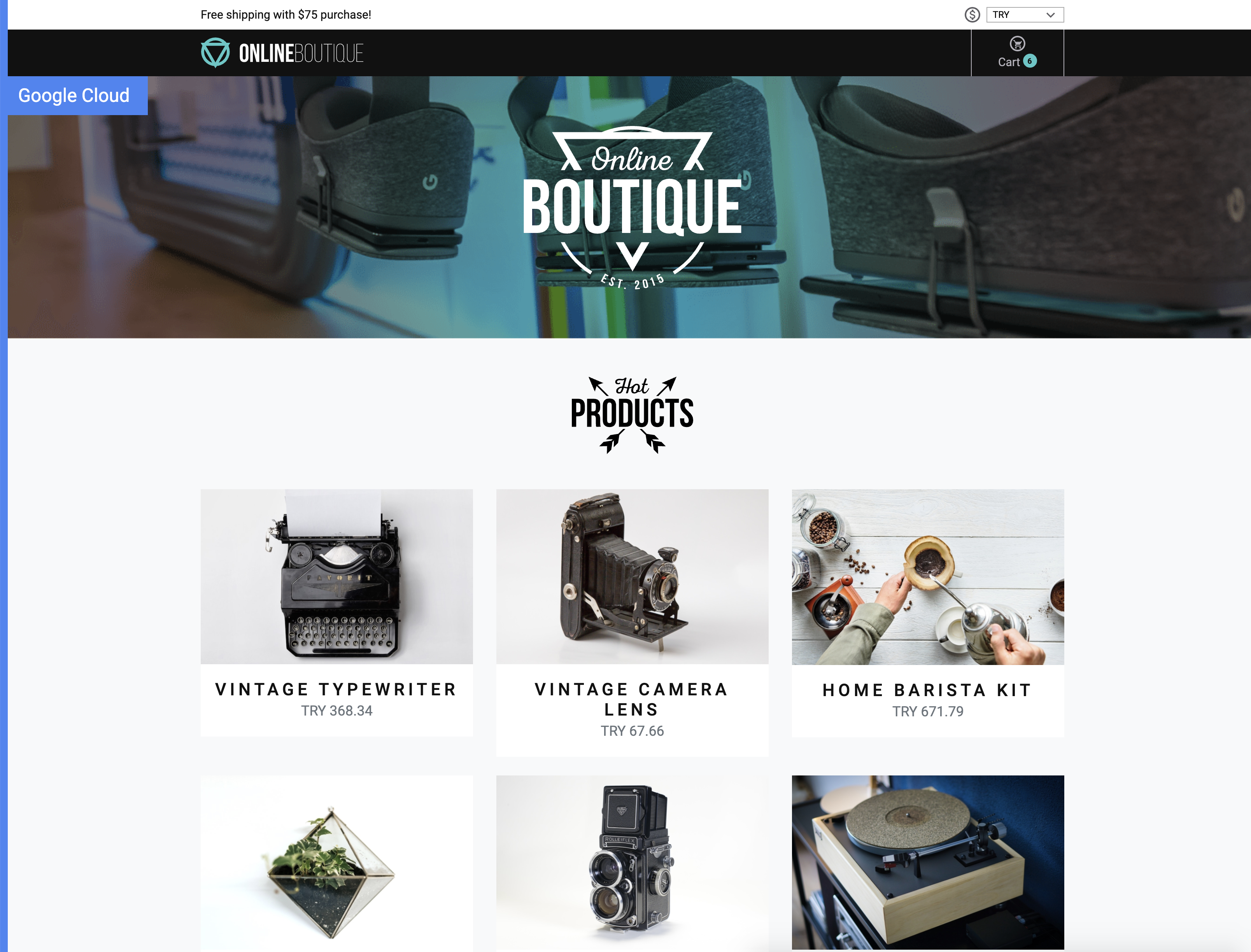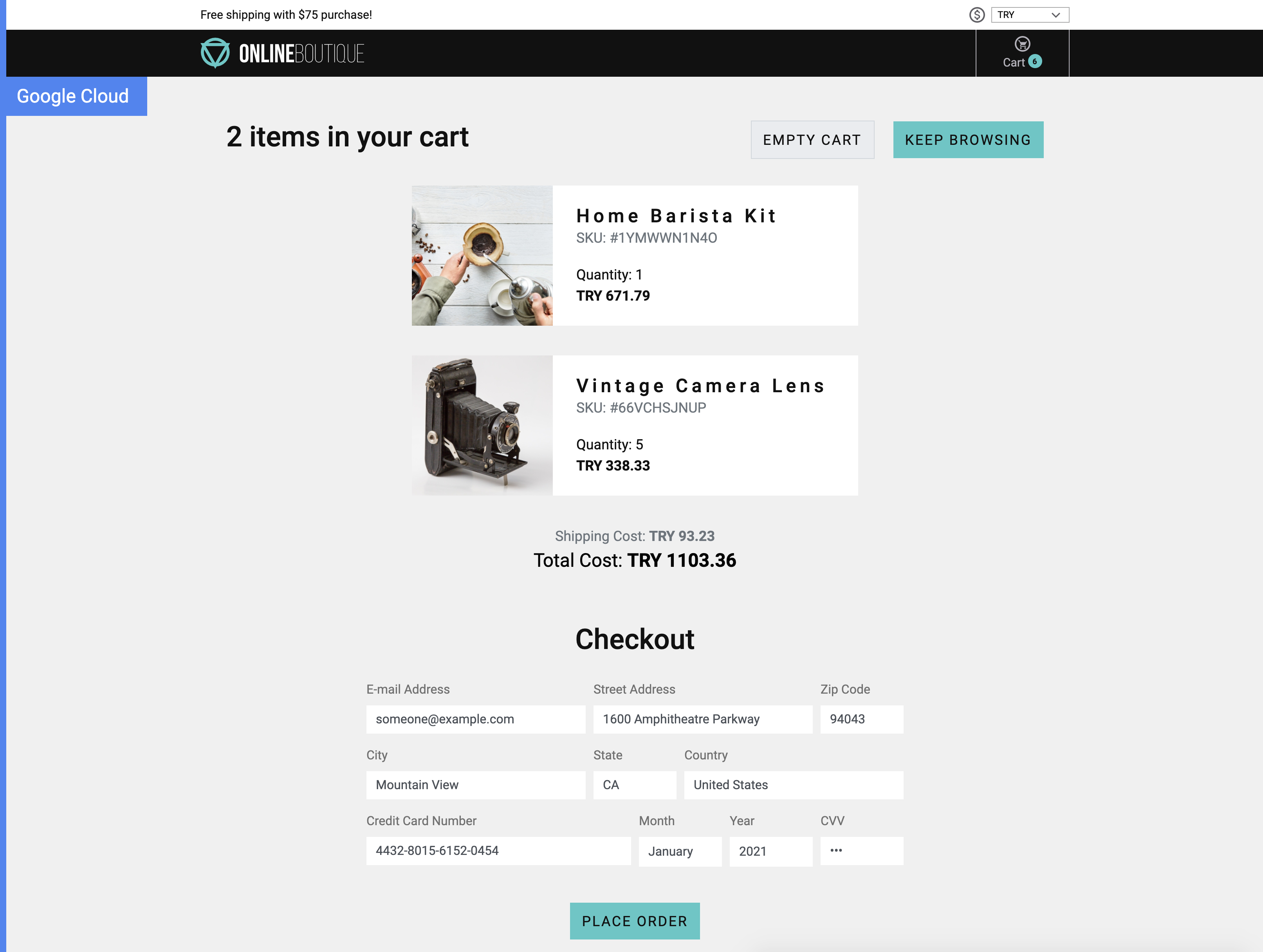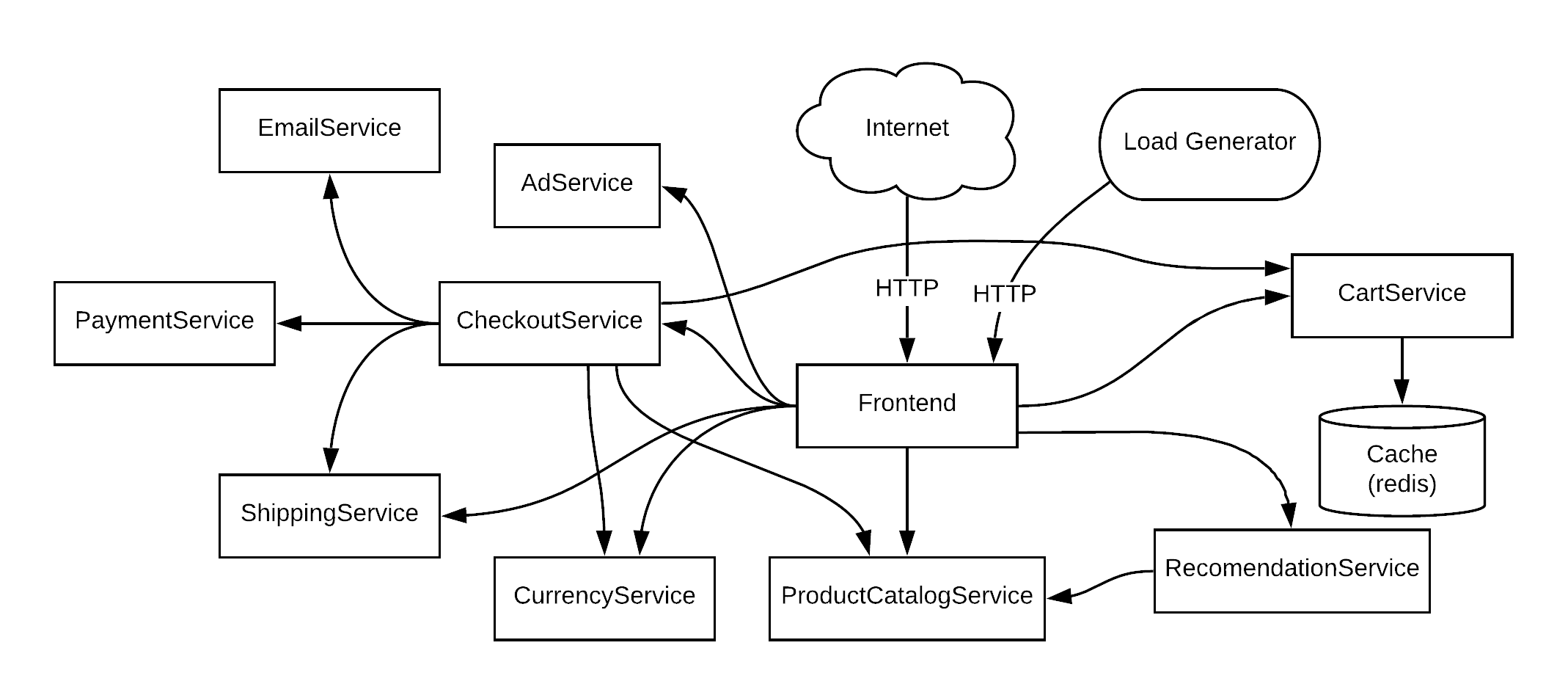ℹ️ SignalFx was acquired by Splunk in October 2019. See Splunk SignalFx for more information.
See CONTRIBUTING.md.
Online Boutique is a cloud-native microservices demo application. Online Boutique consists of a 10-tier microservices application. The application is a web-based e-commerce app where users can browse items, add them to the cart, and purchase them.
Google uses this application to demonstrate use of technologies like Kubernetes/GKE, Istio, Stackdriver, gRPC and OpenCensus. This application works on any Kubernetes cluster (such as a local one), as well as Google Kubernetes Engine. It’s easy to deploy with little to no configuration.
If you’re using this demo, please ★Star this repository to show your interest!
👓Note to Googlers: Please fill out the form at go/microservices-demo if you are using this application.
Looking for the old Hipster Shop frontend interface? Use the manifests in release v0.1.5.
| Home Page | Checkout Screen |
|---|---|
 |
 |
Online Boutique is composed of many microservices written in different languages that talk to each other over gRPC.
Find Protocol Buffers Descriptions at the ./pb directory.
| Service | Language | Description |
|---|---|---|
| frontend | Go | Exposes an HTTP server to serve the website. Does not require signup/login and generates session IDs for all users automatically. |
| cartservice | C# | Stores the items in the user's shopping cart in Redis and retrieves it. |
| productcatalogservice | Go | Provides the list of products from a JSON file and ability to search products and get individual products. |
| currencyservice | Node.js | Converts one money amount to another currency. Uses real values fetched from European Central Bank. It's the highest QPS service. |
| paymentservice | Node.js | Charges the given credit card info (mock) with the given amount and returns a transaction ID. |
| shippingservice | Go | Gives shipping cost estimates based on the shopping cart. Ships items to the given address (mock) |
| emailservice | Python | Sends users an order confirmation email (mock). |
| checkoutservice | Go | Retrieves user cart, prepares order and orchestrates the payment, shipping and the email notification. |
| recommendationservice | Python | Recommends other products based on what's given in the cart. |
| adservice | Java | Provides text ads based on given context words. |
| loadgenerator | Python/Locust | Continuously sends requests imitating realistic user shopping flows to the frontend. |
- Kubernetes/GKE: The app is designed to run on Kubernetes (both locally on "Docker for Desktop", as well as on the cloud with GKE).
- gRPC: Microservices use a high volume of gRPC calls to communicate to each other.
- Istio: Application works on Istio service mesh.
- OpenTelemetry Tracing: Most services are instrumented using OpenTelemetry trace interceptors for gRPC/HTTP.
- Skaffold: Application is deployed to Kubernetes with a single command using Skaffold.
- Synthetic Load Generation: The application demo comes with a background job that creates realistic usage patterns on the website using Locust load generator.
-
Make sure that you have access to a kubernetes cluster. It can be provisioned using any cloud provider or you can setup a local cluster.
There are three options to run a Kubernetes cluster locally for this demo:
- Minikube (recommended).
Please, ensure that the local Kubernetes cluster has at least 4 CPU's and 4.0 GiB of memory.
Also run
minikube start --cpus=4 --memory 4096
minikube tunnelin a separate console to be able to access app's UI. - Docker for Desktop
- set CPUs to at least 3, and Memory to at least 6.0 GiB
- on the "Disk" tab, set at least 32 GB disk space.
- Kind
kind create cluster
- Minikube (recommended).
Please, ensure that the local Kubernetes cluster has at least 4 CPU's and 4.0 GiB of memory.
-
Create kubernetes manifest files:
./hack/make-release-artifacts.sh
If you want to enable Splunk RUM instrumentation, set
RUM_REALMandRUM_AUTHenv variables before creating the manifest files, for exampleexport RUM_REALM=<YOUR_RUM_SPLUNK_REALM> RUM_AUTH=<YOUR_RUM_AUTH_TOKEN>
Optional RUM parameters can be used as well:
RUM_APP_NAME,RUM_ENVIRONMENTandRUM_DEBUG. -
Now you can see kubernetes manifest in
./release/kubernetes-manifests.yaml. To apply it in your kubernetes cluster, run:kubectl apply -f release/kubernetes-manifests.yaml
-
Run
kubectl get podsto verify the Pods are ready and running. It may take up to 2 minutes. -
Now you can see web frontend by looking for
EXTERNAL_IPof the frontend kubernetes service:kubectl get service frontend-external | awk '{print $4}'
The same way you can access the load generator UI:
kubectl get service loadgenerator | awk '{print $4}'
-
Launch a local Kubernetes cluster with one of the following tools:
-
To launch Minikube (tested with Ubuntu Linux). Please, ensure that the local Kubernetes cluster has at least:
- 4 CPUs
- 4.0 GiB memory
- 32 GB disk space
minikube start --cpus=4 --memory 4096 --disk-size 32g
-
To launch Docker for Desktop (tested with Mac/Windows). Go to Preferences:
- choose “Enable Kubernetes”,
- set CPUs to at least 3, and Memory to at least 6.0 GiB
- on the "Disk" tab, set at least 32 GB disk space
-
To launch a Kind cluster:
kind create cluster
-
-
Run
kubectl get nodesto verify you're connected to the respective control plane. -
Run
skaffold run(first time will be slow, it can take ~20 minutes). This will build and deploy the application. If you need to rebuild the images automatically as you refactor the code, runskaffold devcommand. -
Run
kubectl get podsto verify that all the pods are ready and running. -
Access the web frontend through your browser
- Minikube requires you to run a command to access the frontend service:
minikube service frontend-external
-
Docker For Desktop should automatically provide the frontend at http://localhost:80
-
Kind does not provision an IP address for the service. You must run a port-forwarding process to access the frontend at http://localhost:8080:
kubectl port-forward deployment/frontend 8080:8080
If you've deployed the application with skaffold run command, you can run
skaffold delete to clean up the deployed resources.
If you've deployed the application with kubectl apply -f [...], you can
run kubectl delete -f [...] with the same argument to clean up the deployed
resources.
- Google Cloud Next'18 London – Keynote showing Stackdriver Incident Response Management
- Google Cloud Next'18 SF
- Day 1 Keynote showing GKE On-Prem
- Day 3 – Keynote showing Stackdriver APM (Tracing, Code Search, Profiler, Google Cloud Build)
- Introduction to Service Management with Istio
- KubeCon EU 2019 - Reinventing Networking: A Deep Dive into Istio's Multicluster Gateways - Steve Dake, Independent
This is not an official Google project.
